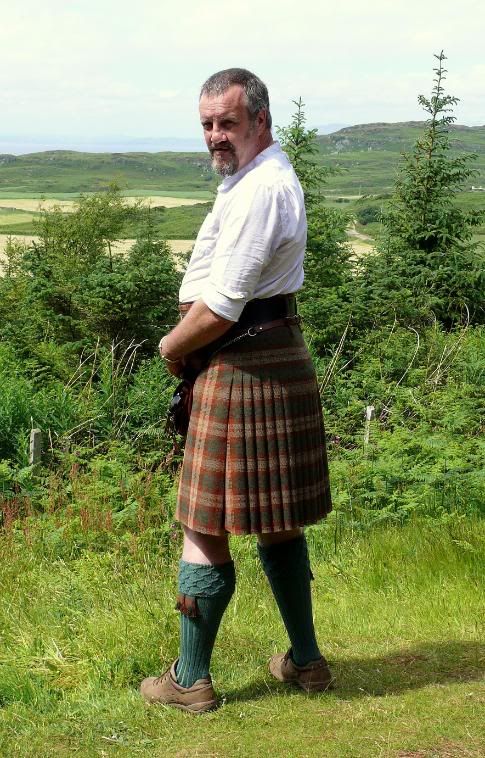|
-
15th June 08, 07:38 AM
#1
Tyneside Scottish Tartan
The Tyneside Scottish where a 1st World War battalion raised by the Kitchener (your country needs you) campain in 1914.
It is reported that the Tyneside Scottish battalions contained no more than 25% of Scots, the remainder where Geordies attracted to glamour of Scottish regiments,
I suspect glamour should read Kilts, however an application for a full kilted uniform was quickly turned down by the military authorities (the powers that be knew the battalion
would be no more than cannon fodder, and where not prepared to waste precious resources), however the battalion where granted permission to wear the Glengarry and each
regiment was permitted to have a pipe and drum band, old photographs show the pipers wearing the Shepherd check.
The Tyneside Scottish saw action at the Somme in 1916, on 1st July of that year the brigade suffered the heaviest casualties for any brigade, a total of 1750 Officers and Soldiers
lost the lives on that fateful day, the huge loss of life was so severe that along with the Tyneside Irish battalion they where transferred to the 37th Division, before a final transfer to the 34th
division, before being disbanded in 1918.
However, late 1916 it is reported that the authorities relented, and a new brigade tartan was issued to replace the Shepherds Check, it was affectionately called the "Sandbag Tartan" due to
the fact that it was made up from army stockpiles of wool, in the colours, Khaki, Battledress Green, and Brown using the Black Watch sett.
The Sandbag tartan is now regarded as the district tartan for the Tyneside district.
I wear the Tyneside Kilt with the greatest respect for those that gave their lives for King and Country, but I also wear it out of respect for those that gave their lives to earn the tartan for the battalion, it is with this respect and regard that I used the battalion badge as a kilt pin.
It in my opinion is a beautiful tartan, woven by Andrew Elliott of Selkirk from cheviot sheep's wool, and built by Redshank Scotland of Inveraray, Argyll, the kilt attracts many complimentary remarks, all of which are answered with sincere thanks and a brief story of the tartan and it's military history.

Regimental Badge, worn as kilt pin, in remembrance of those that gave their lives for the tartan.

Tynside Scottish on the Isle of Gigha

Worn with pride, keeping the memories of the fallen alive
Chris
-
Similar Threads
-
By macwilkin in forum Kilts in the Media
Replies: 37
Last Post: 25th June 09, 10:20 AM
-
By Phil in forum General Kilt Talk
Replies: 83
Last Post: 12th March 08, 06:43 PM
-
By ronstew in forum General Kilt Talk
Replies: 5
Last Post: 26th March 06, 05:01 PM
-
By philbo in forum General Kilt Talk
Replies: 32
Last Post: 21st May 04, 12:13 PM
 Posting Permissions
Posting Permissions
- You may not post new threads
- You may not post replies
- You may not post attachments
- You may not edit your posts
-
Forum Rules
|
|

















Bookmarks